Keyword research is the key to getting the best out of programmatic SEO. It’s like online market research because it helps you understand what terms your potential customers are searching for. And also provides you with valuable insights into their needs and interests so that you can serve them in a better way.
However, the statement above about keyword research does sound familiar, why? Because it’s true for traditional SEO as well. And because pSEO is nothing but an extension of SEO.
But in this blog post, we will be looking at the importance and different ways for programmatic SEO keyword research. Let’s get to it…
What is keyword research?
Keyword research is the process of finding terms that your potential customers use on search engines when they are looking for something online. An ideal programmatic SEO keyword would be a long-tail keyword with low competition.
Keyword research assists in understanding customer behaviour, trends, and prevalent demand, ultimately improving website visibility to the right audience. Keywords play a pivotal role in shaping your programmatic content strategy, and help you directly respond to user queries.
What do programmatic SEO keywords look like?
Generally, a pSEO keyword consists of two parts — head term (or head keyword) and modifier, as shown in the figure below.

Head terms or head keywords are broad-level terms with high competition but also with high volume. Generally, they consist of 2–5 words and are difficult to rank for (and that’s when modifiers come into the picture).
Note that, sometimes, head keywords alone do not make any sense until you combine them with modifiers. I will be providing examples of this below.
Modifiers are terms that you can add to the head terms to make them a long-tail keyword and easy to rank for, by creating programmatic content. The modifiers can be locations, colours, prices, food items, or literally anything that can be attached to head keywords and make combinations that people search for.
There can be one, two, or even three modifiers in a pSEO keyword, generally.
Now, let’s look at some examples:
Example #1: can {fish 1} live with {fish 2}
In the example above, it’s difficult to say what the “head keyword” will be, but the entire keyword does make sense. The modifiers here can be fish names such as angelfish, betta fish, goldfish, etc.
And the combinations would be:
- Can angelfish live with goldfish?
- Can angelfish live with betta fish?
- Can betta fish live with goldfish?
Example #2: resume templates for {job role}
In this example, the head term is “resume templates” and modifiers can be product managers, system engineers, software testers, etc.
And the combinations would be:
- Resume templates for product managers
- Resume templates for system engineers
- Resume templates for software testers
You get the idea, right?
I aim to find the head keywords first, and then worry about modifiers later. In fact, when doing keyword research, I note down several head terms that I come across and then evaluate each of them and find modifiers once finalised.
Different ways to keyword research for programmatic SEO
Now that you understand what pSEO-friendly keywords are and how they look, let’s understand how to find those keywords.
Basically, your goal is to find keywords in which you can either replace some words or add some to construct new keywords that are going to follow the same pattern while creating the content.
1. Brainstorm
Brainstorming is one of the best ways to find topics and areas where you can create programmatic content. Write down all the different aspects of your business on a piece of paper (or any notebook on your computer). Also, think about and note down the problems and bottlenecks that your potential users face.
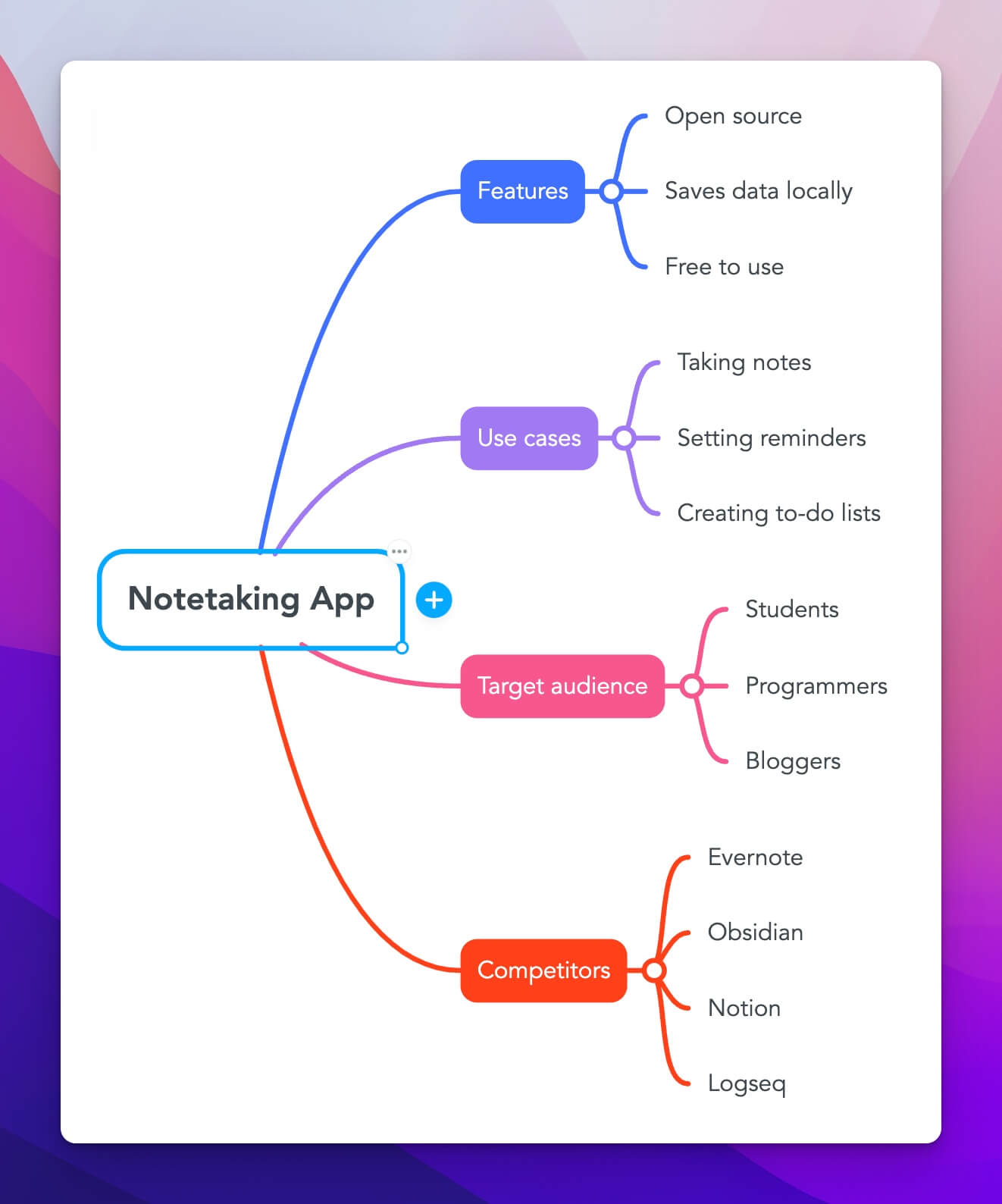
If you’re a visual person, you can also use a mind-mapping tool like MindMeister to write everything down. It might look something like the above screenshot.
Basically, your goal is to find a pattern through the terms that you have noted down. Try adding different modifiers and creating different modifiers to find a pattern — a pattern that can be useful for programmatic SEO.
For example, all popular card providers like MasterCard and Visa have hundreds of “chargeback reason codes” that users often search for. So these companies created separate pages for all the reason codes and now getting tons of traffic on those pages.
My point is that if you owned a card company, “chargeback reason” was definitely a term that you would have noted down in your brainstorming notes. And then it would not have been that difficult to come up with MasterCard chargeback reason code {code} topics for programmatic SEO.
2. Use Google
Whether you’re doing keyword research for programmatic SEO or for regular SEO, Google is the most underrated thing. You can utilise several small tools on their platform to find pSEO keywords that you can’t find anywhere else.
Here are some ideas for you…
Google Autocomplete
When you start typing a term in the Google search box, it automatically starts providing you with some search suggestions. And those can be extremely useful, at times.
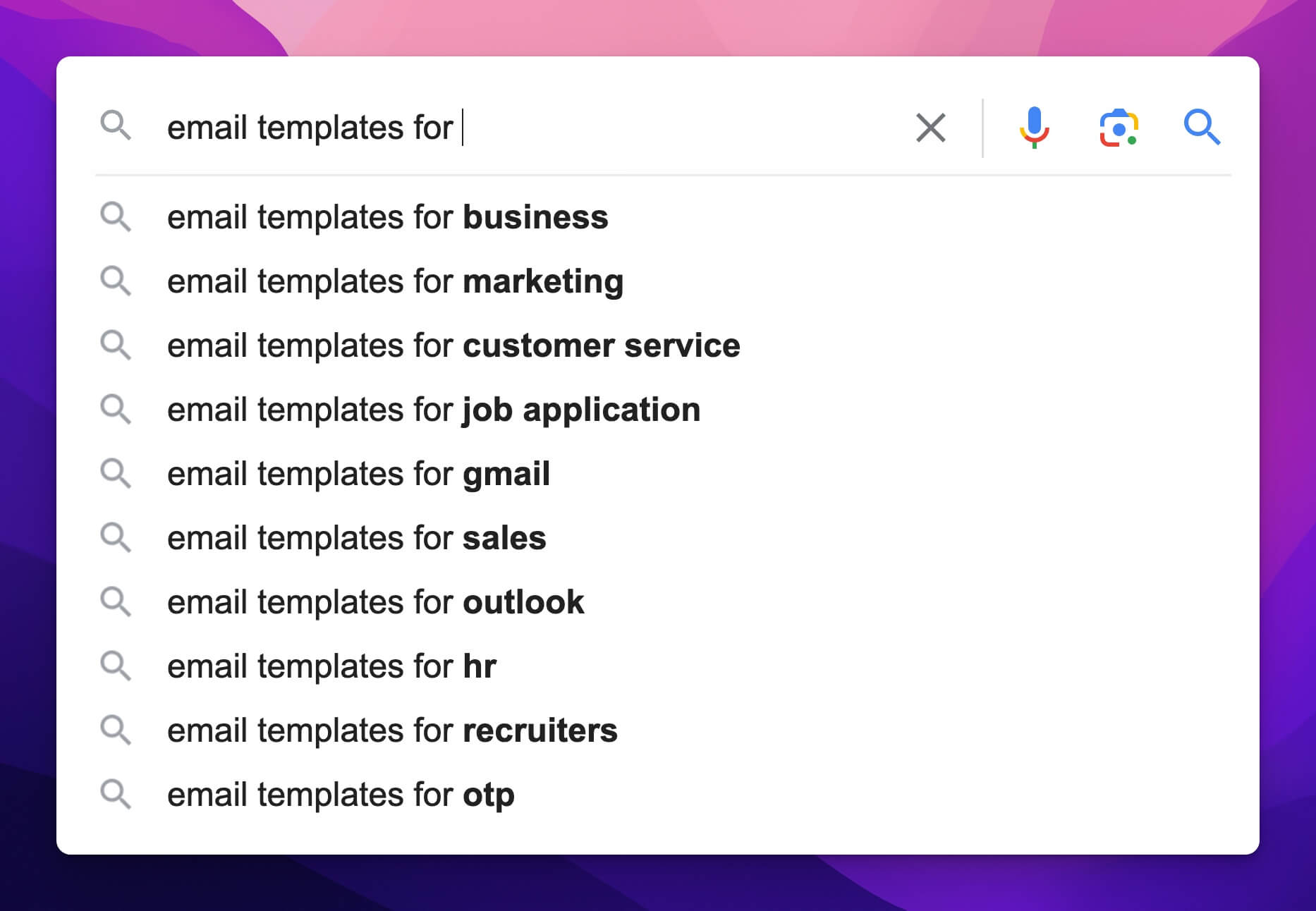
For example, I just typed “email templates for” in Google and you can see all the suggestions incoming. Here, you can also take the help of the * (asterisk) operator — just put the * at the start, end, or in between your terms and Autocomplete will try to show you the relevant terms.
In the above example, now that I know the terms that are getting searched, I know that email templates for {job/position/action} is the keyword, so I can get started with finding all the possible modifiers.
Google Keyword Planner
Start with a term that defines your business and look through the keyword suggestions that Google Keyword Planner provides. Not to mention, the Keyword Planner is completely free to use.
For example, if I have a fitness-related business and I want to provide people with different low-calorie food options to choose from. I’d open the tool and run the “low-calorie foods” term through the tool.
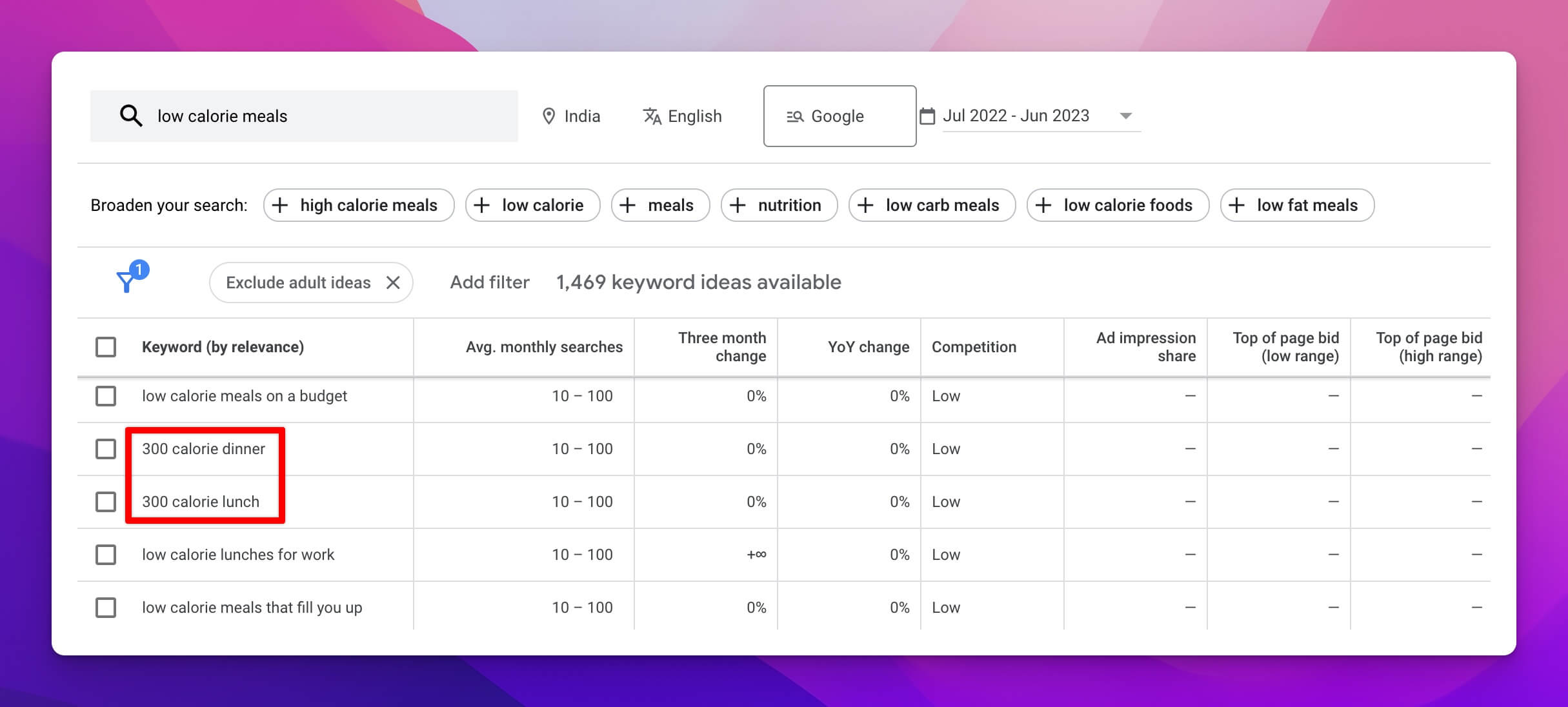
Above, you can see that {calorie} calorie meals can be a great keyword for pSEO. The different combinations can be:
- 200 calorie meals
- 350 calorie dinner
- 1200 calorie meals, etc.
Google Search Console
You might be a bit surprised that the GSC can be an option, but it can be if you have an existing website (already added to the Search Console). Just look through the keywords that are getting a lot of impressions and try to find a pattern.
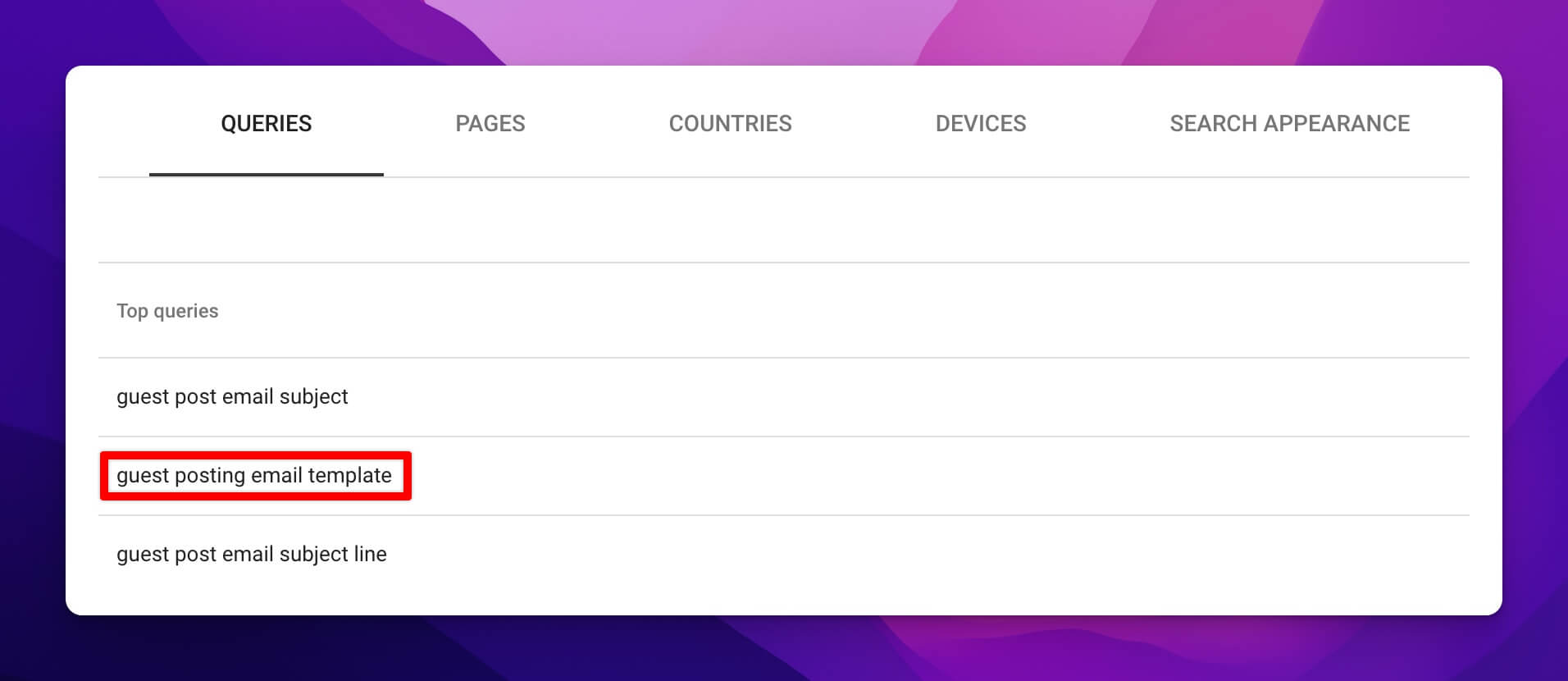
For example, I found out that I am getting impressions for “guest posting email template” so why not extend this and create programmatic pages targeting keywords like:
- Influencer outreach email template
- Content collaboration email template
- SEO audit proposal email template, etc.
Apart from these, Google’s people also ask, and related search sections can also be helpful. You just have to understand what you’re looking for while researching.
3. Raid forums
Forums, where your target users hang out, can be another great place to find pSEO-friendly keywords. Use their search feature and start typing a term that defines your business and see what users are discussing, what information they are seeking, and what problems they are facing.
Some of the forums that I love are Reddit, Quora, and StackOverflow depending on what I am researching about. However, your audience can be on another forum as well.
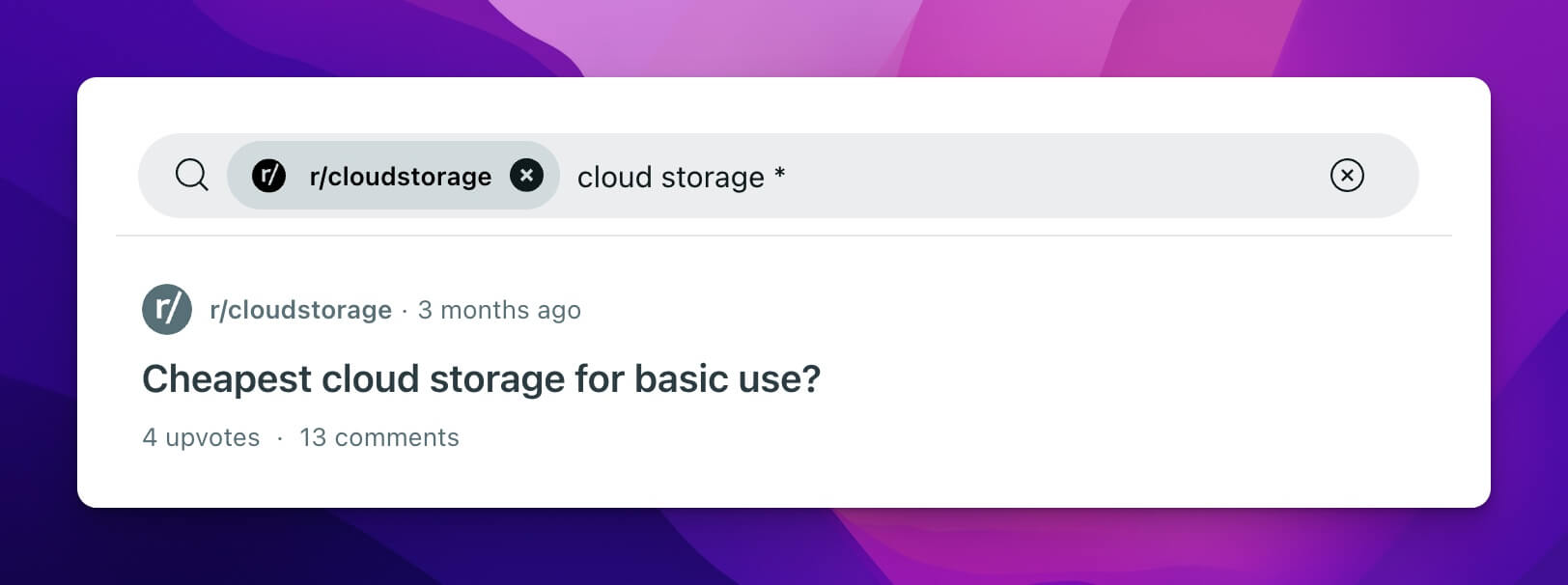
For example, if I am looking for keyword ideas related to cloud storage, then I can just go to the r/cloudstorage subreddit and search for cloud storage * and see what people are searching for. And in the above screenshot, you can see that I can create combinations like:
- Cloud storage for photos
- Cloud storage for drone footage
- Cloud storage for videos, etc.
For your information, the asterisk * operator works in Reddit and most other forums and search engines as well.
4. Use keyword research tools
Keyword research tools like SEMrush and Ahrefs can be another great option to find keywords. By using these tools, you can start researching from a seed keyword that you have or from a competitor’s website as well.
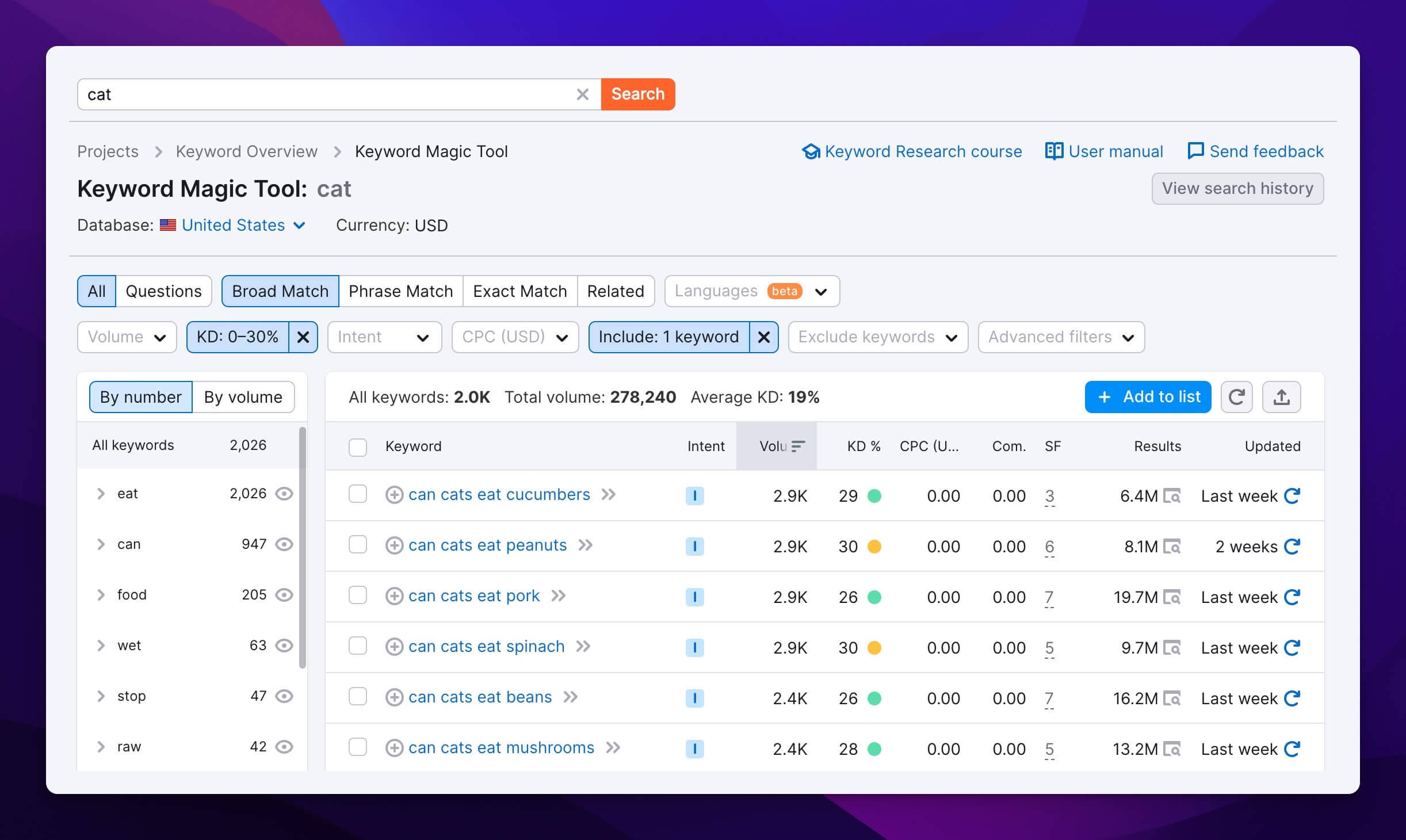
For example, I wanted something related to cat foods and eating habits, so I just put “cat” in the SEMrush Keyword Magic Tool, set some filters (KD < 30, include term: eat), and got some really cool suggestions. There can be 100s of combinations for these.
You can do the same thing in Ahrefs as well.
And again, the * (asterisk) operator also works in both SEMrush and Ahrefs.
5. Utilise internal data
If you have had an existing business running for some time now, you can utilise the internal non-personal data you have collected. This method is not suitable for all kinds of businesses, though.
For example, if a company is collecting data about tech stacks of different SaaS businesses, then they can programmatically publish pages like:
- SaaS businesses using Next.js
- SaaS businesses using PHP, etc.
Or, something like:
- Top 10 finance SaaS businesses’ tech stacks
- Top 10 productivity SaaS businesses’ tech stacks, etc.
And for all this, they will already have the data internally as they are already collecting tech stacks related data for different businesses.
6. Use ChatGPT
Not utilising the power of ChatGPT in your programmatic SEO workflow is not a smart strategy. It can provide you with ideas and suggestions that you or any other tool couldn’t come up with.
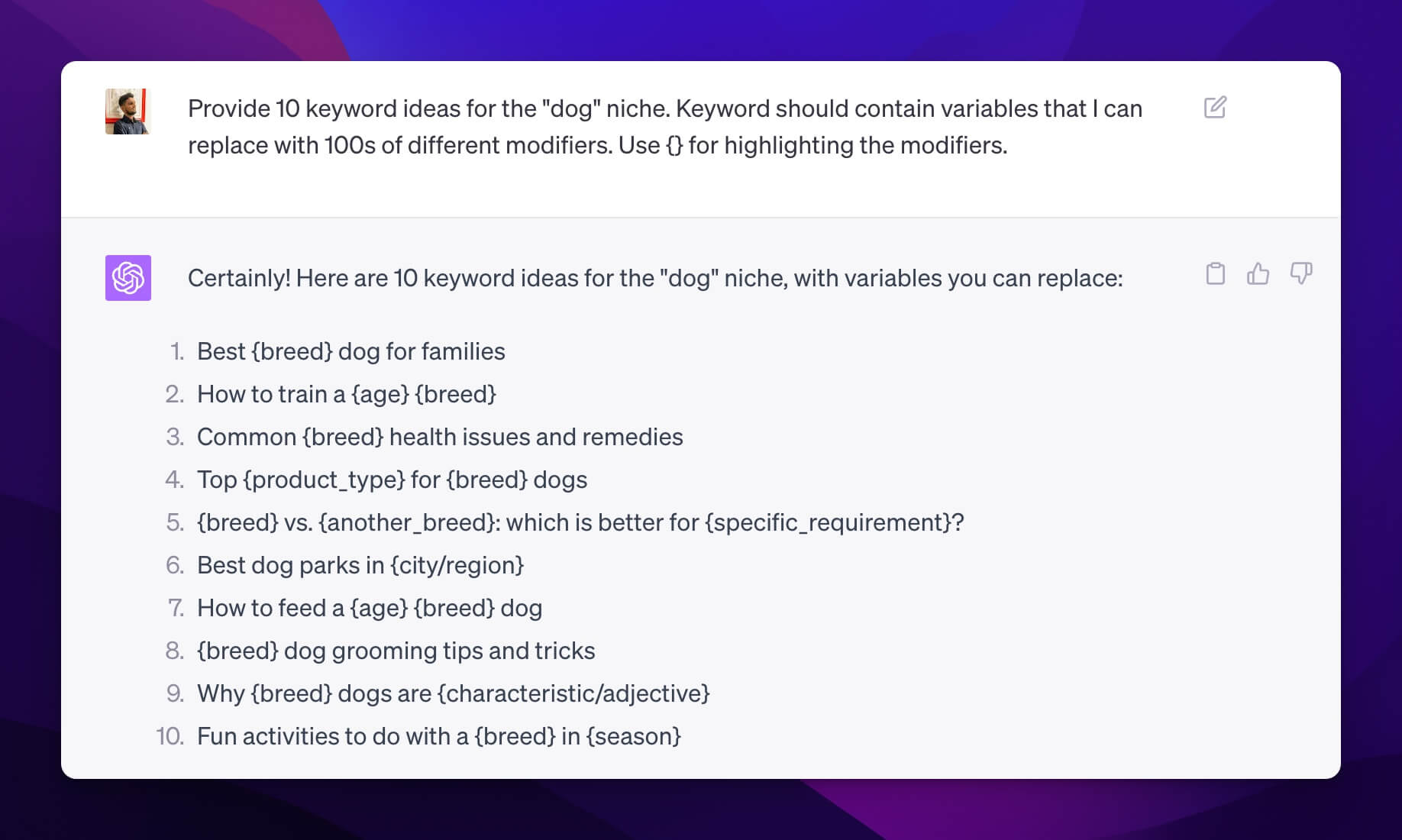
For example, within a minute, I was able to create 10 different keyword ideas that may be used for programmatic SEO (see the above screenshot). Yes, not all of these are worth going after, but you can certainly find some from here.
Apart from finding keywords for pSEO, ChatGPT has several different use cases for programmatic SEO like generating frequently asked questions, helping in creating the page template, writing automation scripts and formulas, creating meta titles and descriptions, etc.
Evaluating the keywords
Once you have the initial list of keywords ready, it’s time to go through each of them one by one and evaluate if they are worth going after. Some things that you can check are:
- Keywords should be less competitive so that your site can rank for them
- Ranking pages should not be high-quality editorial posts because pSEO pages can’t compete with them, generally
- Choose the keywords that you’re sure you can collect data and create a quality page template for
Shortlist the pSEO keywords you’re going to target next on your website and get started with those.
Final words
Once you have a final list of pSEO keywords, just find all the possible “modifiers” for those keywords and get started with preparing data for the project. If you’d like, I have written a guide to finding modifiers for programmatic SEO that you can refer to for more detailed information.
And once you have all the combinations of programmatic SEO keywords ready, it’s time to start the data preparation and then create a high-quality page template.
That’s it.
If you get stuck somewhere, kindly feel free to let me know in the comments below.





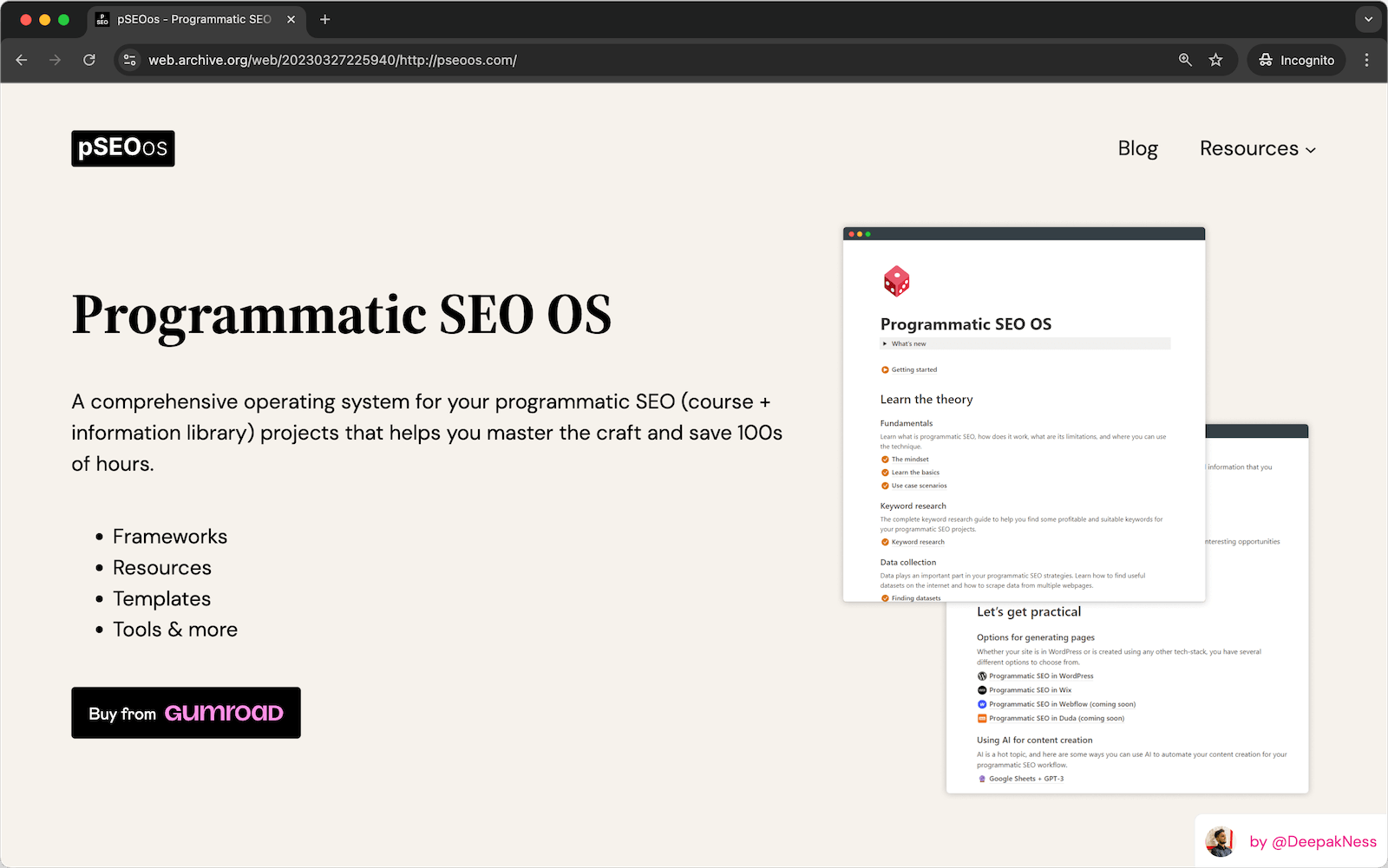
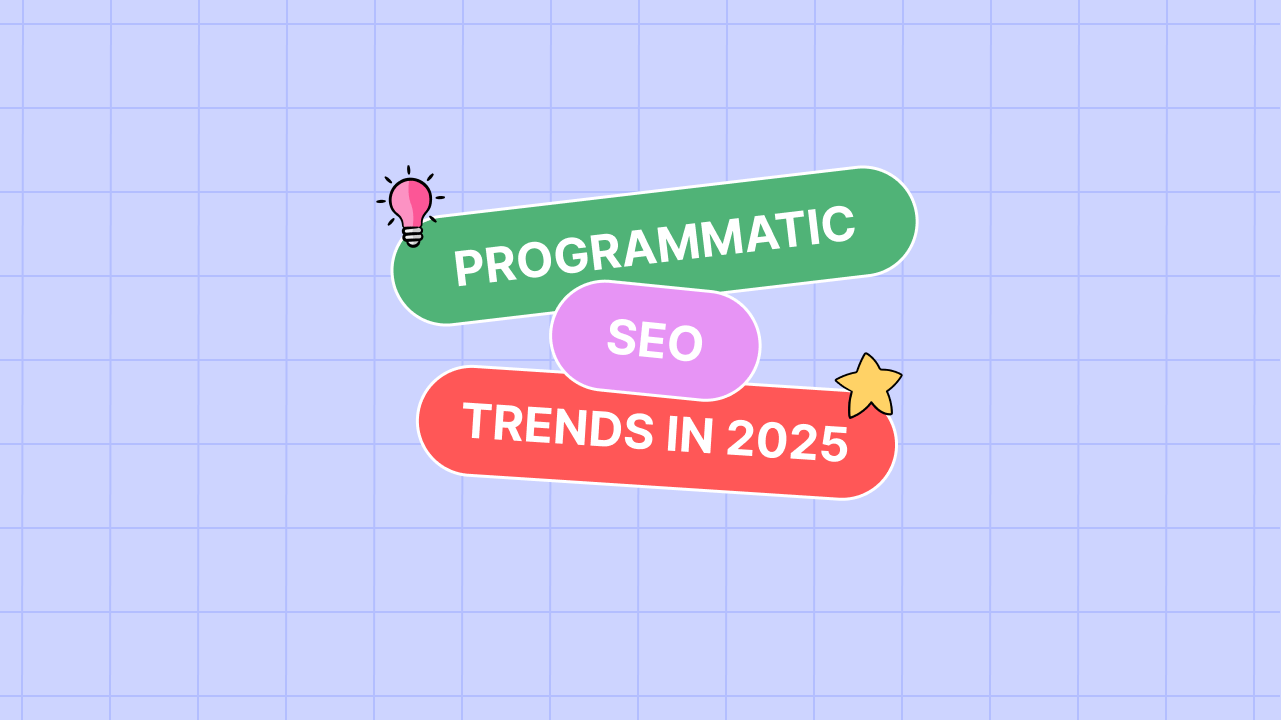

Leave a Reply